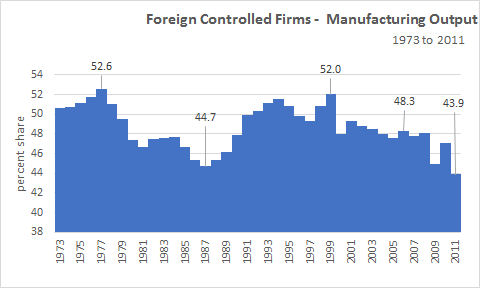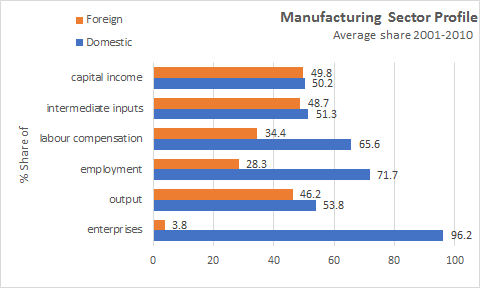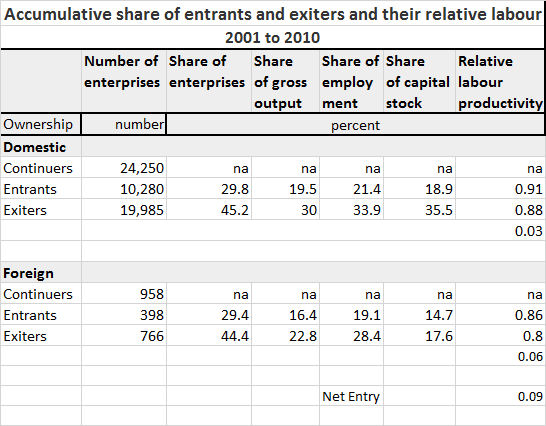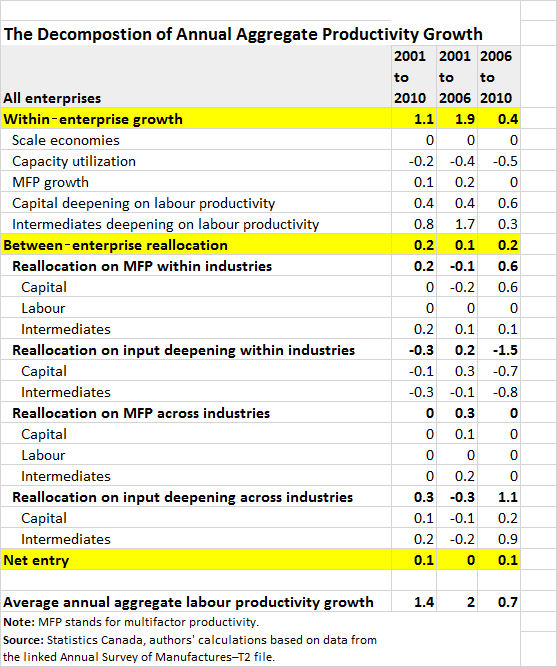The Economics and Statistics Division maintains archives of previous publications for accountability purposes, but makes no updates to keep these documents current with the latest data revisions from Statistics Canada. As a result, information in older documents may not be accurate. Please exercise caution when referring to older documents. For the latest information and historical data, please contact the individual listed to the right.
<--- Return to Archive
For additional information relating to this article, please contact:
November 06, 2017STUDY: MULTINATIONALS AND PRODUCTIVITY IN MANUFACTURING Over the period 1973 to 2011, the Canadian Manufacturing sector has seen strong foreign control of the industry. In 1977 over 52% of the industry output was foreign controlled. Between 1977 and 1987, foreign control declined to 44.7% before rising again to 52% in 1999. Since then foreign control in manufacturing output has declined to 43.9% in 2011.

In the Canadian manufacturing sector, it is important to note that foreign multinationals in the Canadian manufacturing sector have made substantial investments in technology, innovation and skilled labour that have resulted in higher levels of growth rates in productivity relative to their Canadian counterparts. But once again times are changing. This, and other studies, look at the impact on labour productivity growth in the Canadian manufacturing sector in foreign controlled firms – its rise and its fall.

Foreign firms engaged in manufacturing in Canada tend to be large firms. While the share of capital income, intermediate inputs, and outputs are similar to domestic firms, the share of enterprises is small (average 3.8% 2001-2010).
In the period 2001-2010, labour productivity growth in manufacturing was greatest in foreign controlled firms. After 2006, with the exit of many large and productivity foreign controlled firms, their contribution to labour productivity growth declined. During the restructuring in the manufacturing sector after 2006, labour productivity increased with the reallocation of labour towards capital and intermediate input intensive firms; and labour productivity decline, where labour was reallocated towards less capital intensive and intermediate input intensive firms.
Entry and exit rates
The effect of the net entry of domestic and foreign firms in manufacturing industries contributed 0.1 percentage point or about 10% of aggregate labour productivity growth from 2001 to 2010. The positive contribution is a result of the relatively high productivity of entrants compared to that of exiters during that period.

Summary of the sources of labour productivity growth 2001-2010
The table presents a summary of multiple factors contributing to labour productivity growth from 2001 to 2010. Over that period, aggregate labour productivity rose 1.4% per year. Productivity growth that took place within firms accounted for 1.1 percentage points or about 79% of aggregate labour productivity growth. The effect of reallocation among incumbents and net entry contributed to 0.3 percentage point or 21% of the aggregate labour productivity growth.

Labour productivity is a measure of real gross domestic product (GDP) per hour worked
Unit labour cost is defined as the cost of workers' wages and benefits per unit of real GDP.
Statistics Canada Source: Study: Multinationals and the process of reallocation: The changing importance of multinationals and their impact on productivity growth in the Canadian manufacturing sector
CANSIM 383-0008 383-0021
Multifactor productivity, value-added, capital input and labour input in the aggregate business sector and major sub-sectors, by North American Industry Classification System (NAICS) 1961-present
<--- Return to Archive